|
When the youth-shepherd volunteered to confront
Goliath in the Valley of Elah during that epic
battle of the Philistines versus the Israelites,
David asserted to King Saul that he had protected
his flock by killing lion and bear. To me it’s
noteworthy that David doesn’t mention the leopard,
even though in his day, leopards certainly prowled
the Judean Wilderness in search of a juicy lamb
chop. |
|
|
|
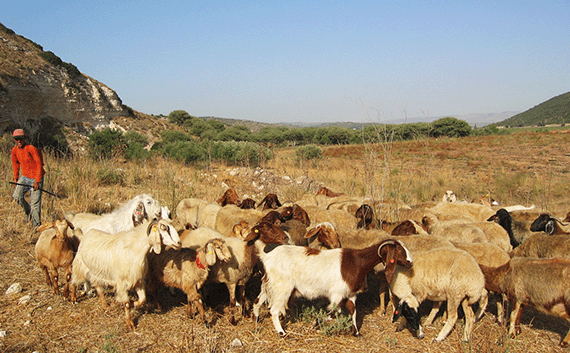 |
|
Photo: Gila
Yudkin |
|
Scene at the Valley of Elah where
the Israelites faced the Philistines |
|
|
|
In First Samuel 17, David furthermore stated, “The
LORD, who delivered me from the paw of the lion and
from the paw of the bear, He will deliver me from
the hand of this Philistine.” (verse 37) |
|
|
|
It’s clear from this passage that David hadn’t ever
been pawed by a leopard. Well, why not, I
always asked myself. |
|
|
|
Probably because the leopard is an elusive solitary
hard-to-spot camouflaged nocturnal predator.
This I learned by experience as I safari-ed through
Kenya, South Africa, Zimbabwe and Botswana in search
of a live leopard. While I easily spotted
families of elephants, lions, lionesses and cubs,
hippos and crocodiles up close and personal, the
closest I got to a leopard was seeing its tracks in
Zimbabwe and its markings (where it had peed) in
Kenya twenty-five years earlier.
|
|
|
|
But finally!!! In October 2021 in the Rift
Valley, in South Luangwa, Zambia, I spotted a
gorgeous beautiful sleeping leopard sprawled around
a tree with her eyes closed. A tail was
hanging down on one side of the thick branch and a
paw hanging out on the other. Our Zambian
guide/driver/tracker named Patson told us she was a
female with two cubs. We could see that her
belly was full with the contents of her previous
evening’s dinner. I wondered whether it had
been a sickly impala, a stray buffalo or a lost
zebra.
|
|
|
|
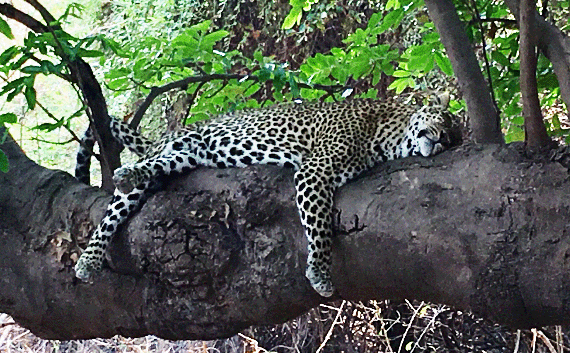 |
|
Photo: Gila
Yudkin |
|
Finally see a leopard, but in
Zambia, NOT in the Judean wilderness! |
|
|
|
Now why did I have to venture all the way to Africa
to see a leopard, when they once commonly roamed the
“cliffs of the wild goats” (in the King James
translation First Samuel 24), the area of En Gedi
above the western shores of the Dead Sea? Because
since the early twenty-first century these
captivating creatures are thought to be extinct in
The Holy Land. What a pity! |
|
|
|
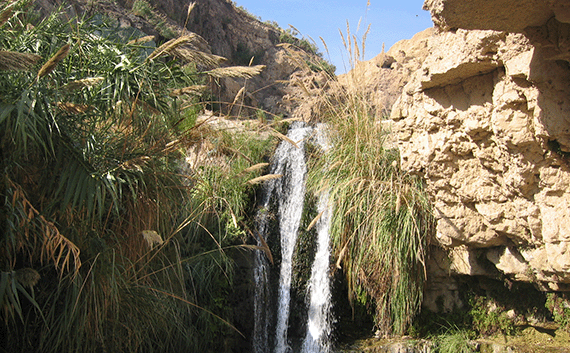 |
|
Photo: Gila
Yudkin |
|
Oasis of En Gedi where David found
refuge with his band of outlaws |
|
|
|
When I first started to guide hiking tours in the
area of En Gedi, it was forbidden to hike in groups
of less than five people, because of the leopards. I
vividly remember the signs “Beware of the Panthers!”
in large capital letters. (It was a mistranslation
because namer in Hebrew means both leopard and
panther – and also tiger.) Later, in the
mid-nineteen eighties it was forbidden to hike in
groups of less than eight people. |
|
|
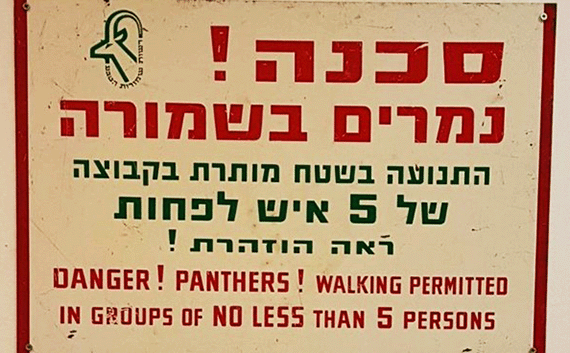 |
|
Courtesy of a
tourist photographed in the mid 1980s |
|
Warning sign with a mistranslation
of Namer which means leopard, panther or
tiger |
|
|
|
I have a hand-written note to myself (before the
days of computers) dated April 1988 that there were
nine leopards being tracked in the En Gedi area. And
there were believed to be more in the Negev, south
west of the Dead Sea. One leopard who was
caught had a tracking collar put around his neck so
his whereabouts could be broadcast. He was five years
old and weighed 39 kilos (86 pounds). |
|
|
|
Everyone loved the idea of having leopards out and
about in the area where David sought refuge from
King Saul during the latter’s flareups of bipolar
disorders when he vowed to kill David. Except for
the members of the En Gedi Kibbutz where the
leopards were devouring the house pets. Most
of all the leopards
favored other cats! |
|
|
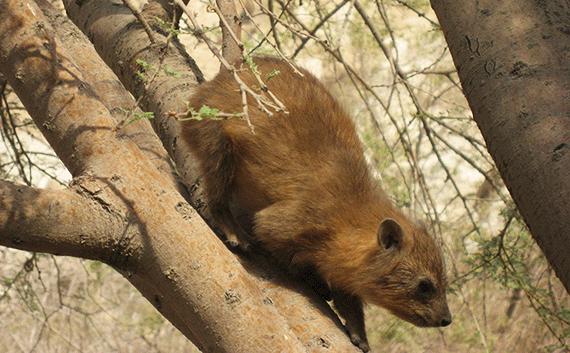 |
|
Photo: Gila
Yudkin |
|
A coney, common in En Gedi at the
time of David, was a yummy leopard snack |
|
|
|
Leopards were first photographed in the En Gedi area
in 1974, a year after I arrived in Israel from
Connecticut. (Where there were no leopards!) Before
1974 it was believed they were extinct. In 1978
there were five female leopards and 3 males, an
ideal combination for propagation. |
|
|
|
As a novice guide, I began to follow the story of
Humbaba, queen of the Judean Desert. She was killed
by soldiers in September 1993 at the age of 18, our
equivalent of age 90. She was deaf and blind in one
eye. |
|
|
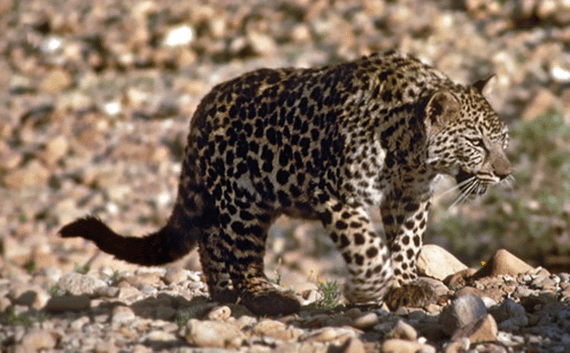 |
|
Unknown provenance |
|
A leopard in the wilderness of
Judea; this may be a photo of Humbaba, not sure |
|
|
|
Humbaba was the most powerful of the leopards. (She
was named after the king of the forest in the
ancient Mesopotamian epic poem about King
Gilgamesh.) Humbaba was light, very spotted and
quick as a spring. No other leopard dared to enter
her territory without her permission. She marked out
her territory by digging out deep ditches from Wadi
Arugot to the oasis of En Fashha, along the cliffs,
a distance of 28 kilometers. Only once did she leave
her territory. She went to Wadi Kelt (along the Old
Jericho Road where there’s room for just two!). But
after a week, she returned to her own territory near
the Dead Sea. Probably there wasn’t enough tasty
food there for her to fill her stomach. |
|
|
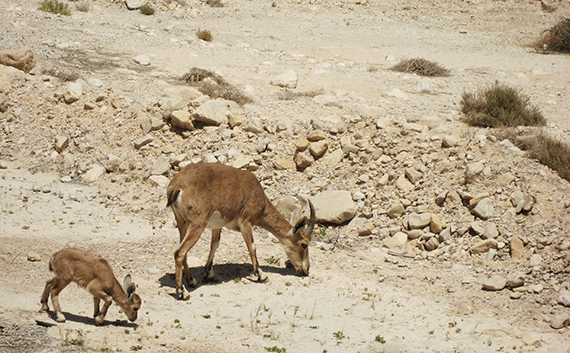 |
|
Photo: Gila
Yudkin |
|
These ibex would be a hardy
breakfast at En Gedi for Humbaba or her cubs |
|
|
|
In August 1981 she was captured by some members of
the Israel Nature Society, knocked out by anesthesia
and had a beeper attached to her neck. The trackers
were able to determine her whereabouts at all times,
what she ate, and where and when she moved her cubs. |
|
|
|
At that time she was raising a four month old cub. She and the cub and the oldest male leopard in the
region were residing harmoniously in her territory.
Her mate was named Precambrian, named after a
prehistoric period. But the harmony was disrupted
when a young daring upstart male appeared on the
scene. There was a battle in which Hombaba’s partner
and her cub were killed. |
|
|
|
Humbaba apparently had no hard feelings and mated
with the upstart. She had a female cub who was
killed a year later when an Israeli command car accidently hit her. Then a year later she had twins which she hid in a cave
which was on the border of another leopard’s
territory. Once when Humbaba was prowling for prey,
the neighboring leopard took advantage of her
absence, entered the cave and ate the twin cubs.
Humbaba
mated again and had a male cub whom the trackers
named Amraphel after Genesis 14:1. (King Amraphel
joined a coalition with four others against the King
of Sodom and the King of Gomorrah.) |
|
|
|
In 1987 Humbaba was pushed out of her territory
which was rich with ibex, conies and porcupines by a
younger female leopard with chutzpah who was named
Shlomzion. Humbaba licked her wounds and retired to
another territory near Qumran. In her last years,
she led a peaceful life. Here and there she caught a coney and was often seen high on the rocky cliffs,
observing the scene below her. |
|
|
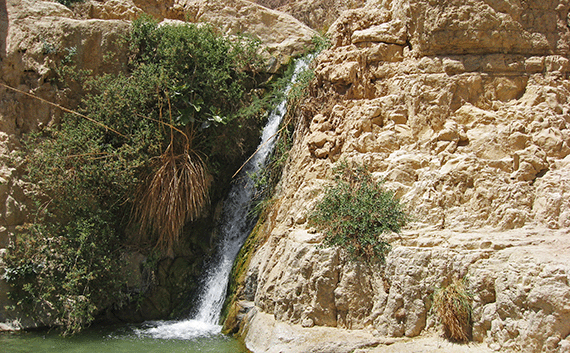 |
|
Photo: Gila
Yudkin |
|
A good ambush place for a leopard
at En Gedi could be to the left of the waterfall.
Leopards can jump! |
|
|
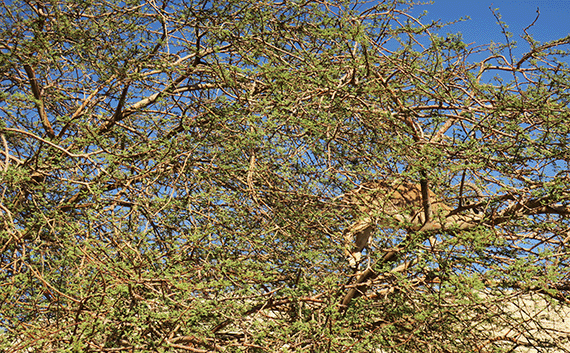 |
|
Photo: Gila
Yudkin |
|
Another good hiding place for a
leopard, in the acacia tree where the ibex is |
|
|
|
In November 1993 there were reportedly only three
leopards left in the Judean wilderness, Shlomzion
and her two cubs. But evidence of the presence of
leopards farther south in the Negev desert and the
Wilderness of Zin continued to emerge. A 2005 study
of the DNA of leopard turds in the Negev determined
that there were six to nine leopards in the area. |
|
|
|
And in 2008, a leopard entered the home of a park
ranger at Sde Boker, above the wilderness of Zin, in
order to kill a cat. The hapless ranger jumped on
the leopard, caught him and pushed the leopard into
a large garbage bin. It turned out that the leopard
was sick and died soon afterwards. Nearby at the
same time, another leopard was “quilled” by a
porcupine she was trying to catch for dinner. That
leopard died of infection from the quill! |
|
|
|
Oh there are such charming stories about the
leopards in by-gone days, but the question is, will
they ever return? I hope so! |
|
|
|
Now back to our original question – Did David ever
spot a leopard in the Judean Wilderness. My guess
would be yes. Or perhaps, maybe. What do you think? |
|
|
|
Here’s a vision from the prophet Isaiah for world
peace that we can set our sights on: |
|
|
|
“The wolf also shall dwell with the lamb,
The leopard shall lie down with the young goat,
The calf and the young lion and the fatling
together;
And a little child shall lead them.” Isaiah 11:6 |
|
|
|
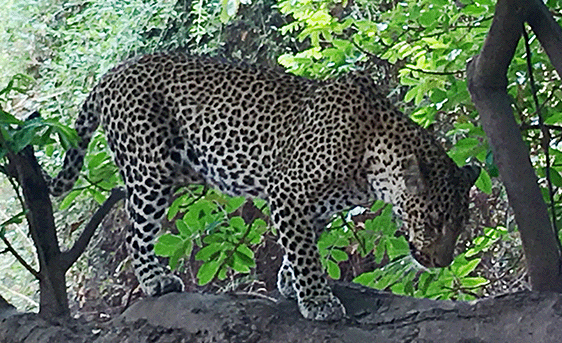 |
|
Photo: Gila
Yudkin |
|
|
|
Postscript |
|
|
|
Even if I never saw a leopard in the flesh, my good
buddy guide and novelist Miriam did. It was January,
late afternoon in the nineteen nineties. She and her
group were heading north after visiting Masada. Her
driver Yossi was the first to spot the leopard. Here
is her testimony: |
|
|
|
[The leopard] “was walking along in the brush on the
right side of the road. As soon as Yossi saw it, he
slowed down and we drove alongside of it. It padded
along next to us and didn’t seem to know, or not to
care, that this big bus was riding alongside of it. All the people on the bus saw it as well. It had a
collar on its neck, which the parks authority folks
had around all the leopards at the time.... I also remember that it seemed
that its front tooth was hanging down and it had its
mouth open. I thought it might be injured and I
called the parks authority the next day to report
it. Yossi and I would talk about that leopard every
time we met up over the years, like “seen any
leopards lately”?” |
|
|
|
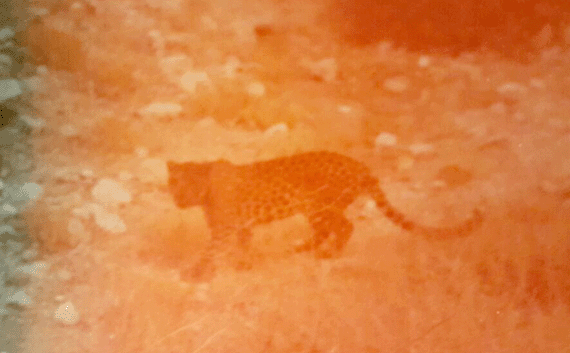 |
|
Taken by a tourist
courtesy of Yossi D and Miriam Feinberg Vamosh |
|
Leopard seen through the bus window stalking the
Judean Wilderness highway |
|
|
|
Copyright 2025
Gila Yudkin. Permission needed to reprint in
any medium. |
|
|
Coming to Jerusalem this
year? You definitely will not spot
a leopard, but chances are you may see a camel (on
the Mount of Olives or in the
Valley of Gehenna). Does the hustle and bustle of
the market give you a high, yet you would like some
quiet moments in the holy sites? Are you eager
to eat humus and knafe elbow-to-elbow with
the "natives," or is dining in the style of King
Solomon and the Queen of Sheba more to your taste?
Gila's Guide
will lift up your spirit as you "Explore
Jerusalem's Soul." This up-to-date PDF (Adobe Acrobat) 46-page
guide gives you the Top Ten places to meditate on
the Bible, the Top Ten lesser-known churches worth
visiting, the Top Ten most rewarding roof-top views
and the Top Ten places for yummy Middle Eastern soul
food. More on
Gila's Guide...
|

